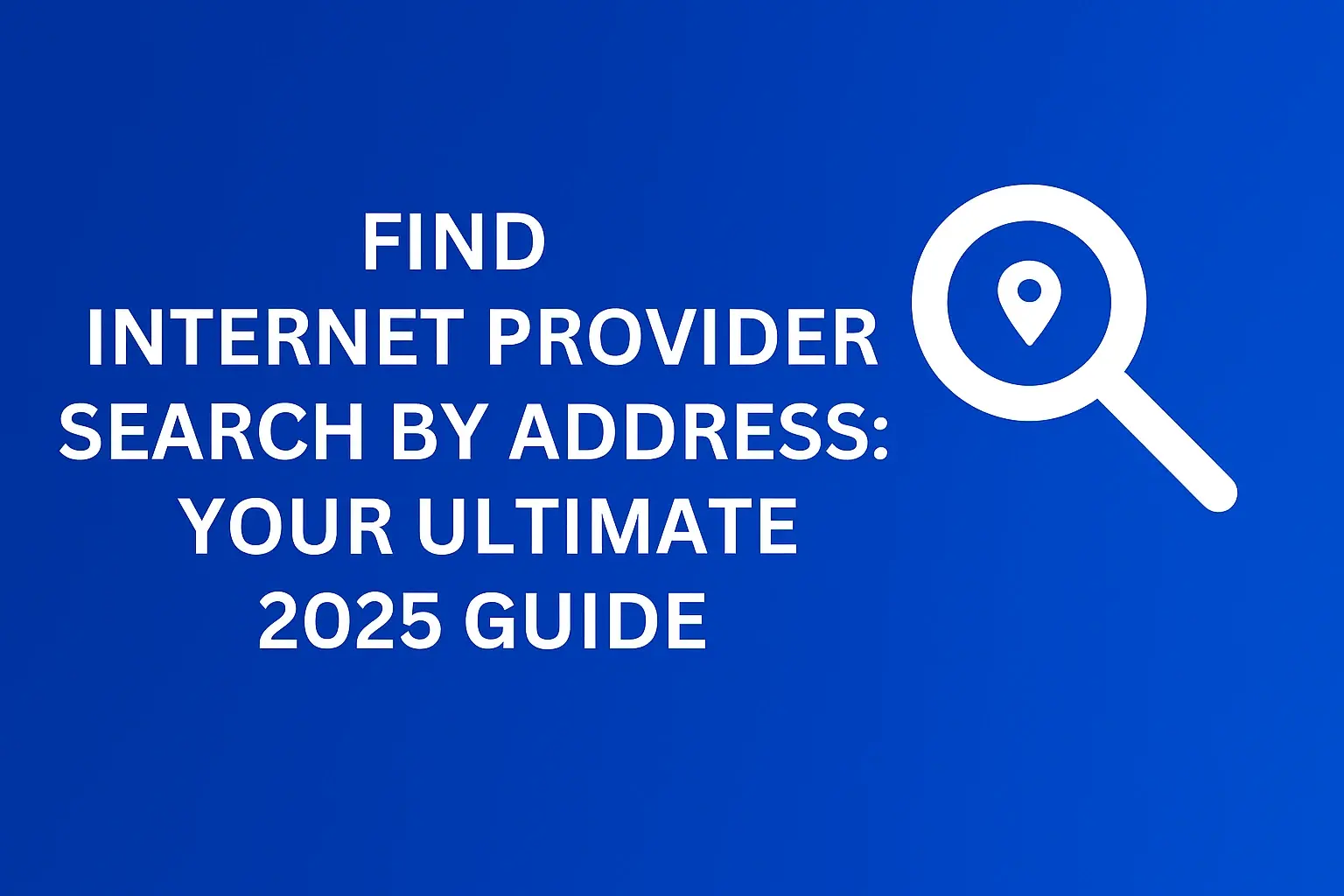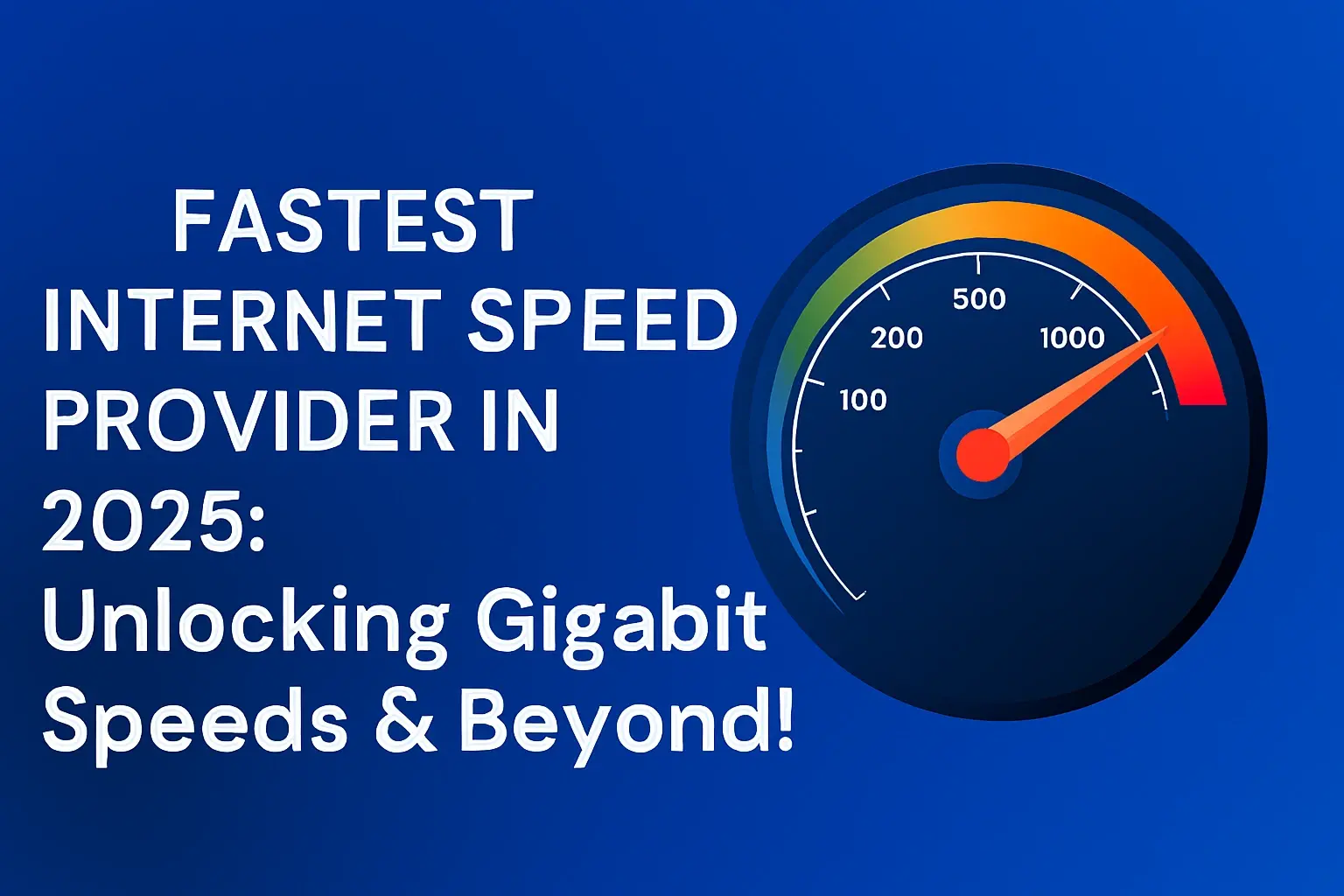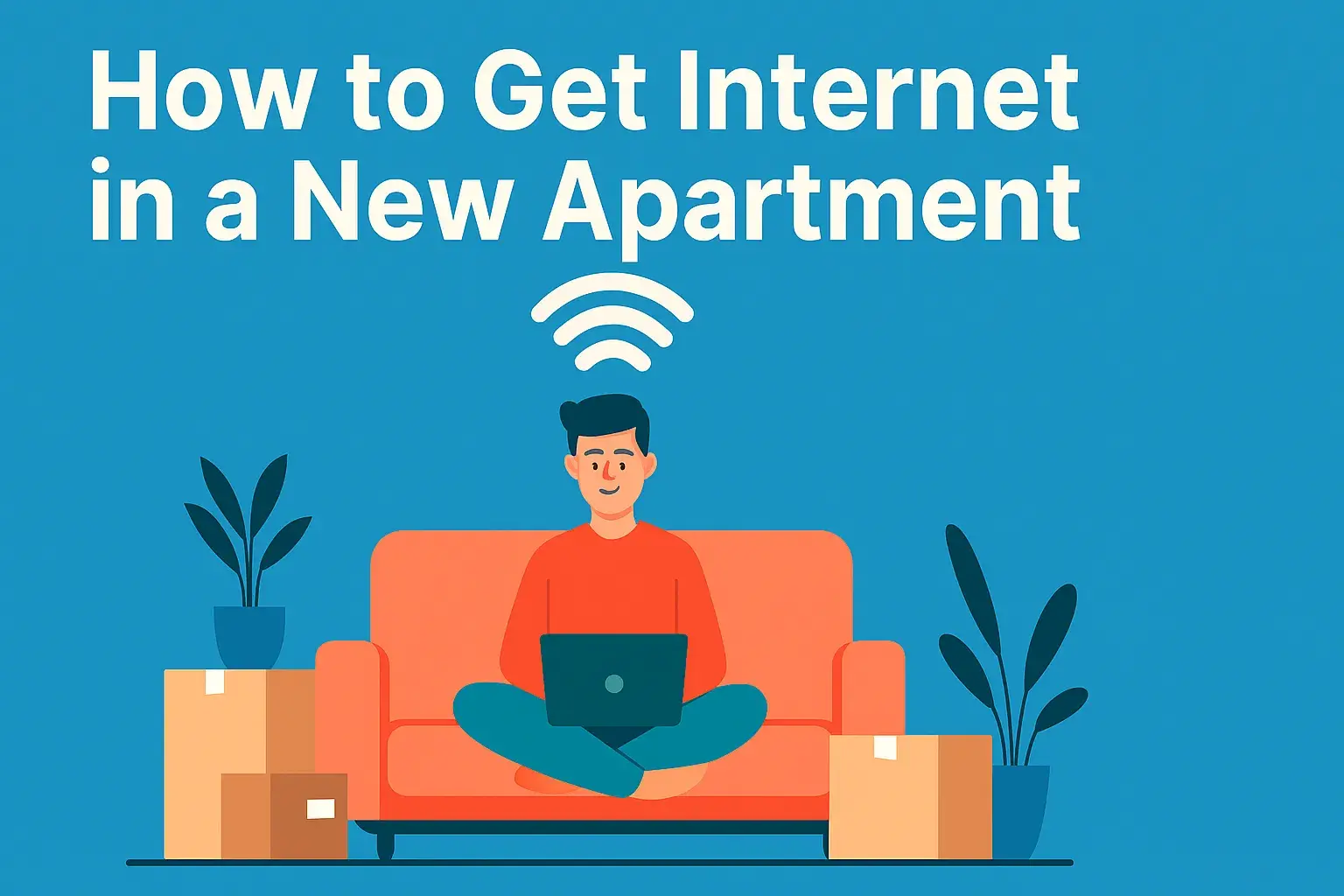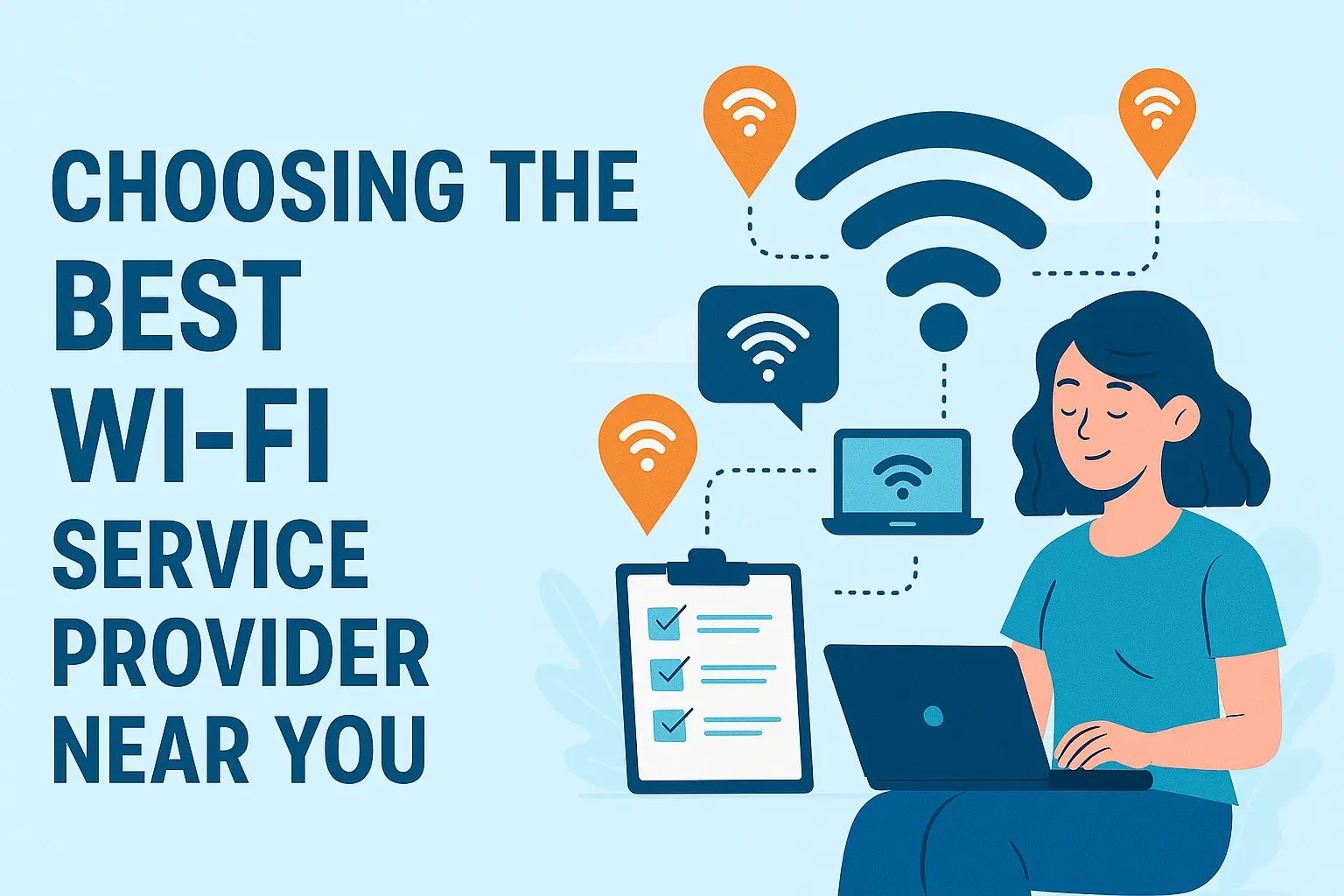Exploring Different Types of Internet Service Providers

Navigating the digital landscape requires understanding your internet connection. This guide explores the diverse world of Internet Service Providers (ISPs), detailing their technologies, pros, cons, and how to choose the best fit for your needs in 2025. Get ready to make an informed decision.
What Exactly Are Internet Service Providers (ISPs)?
Internet Service Providers, commonly known as ISPs, are companies that provide individuals and organizations with access to the internet. They act as the gateway between your home or business and the vast network of global information. ISPs manage the infrastructure, such as cables, routers, and servers, that enables data transmission. In essence, without an ISP, you wouldn't be able to connect to the World Wide Web, stream videos, send emails, or engage in any online activity. Understanding the different types of services they offer is crucial for securing a reliable and efficient internet connection in today's connected world.
Understanding the Core Technologies: Types of Internet Connections
The internet connection you choose is dictated by the underlying technology your ISP employs. Each technology has its own set of advantages and disadvantages, impacting speed, reliability, cost, and availability. As of 2025, several primary types of internet connections dominate the market, catering to diverse user needs and geographical locations. Let's delve into each one.
DSL (Digital Subscriber Line) Internet
DSL internet is one of the older, yet still prevalent, forms of broadband internet access. It utilizes the existing copper telephone lines to transmit data. DSL works by using a higher frequency range than that used for voice calls, allowing simultaneous internet and phone usage without interference, provided you use a DSL filter. The speed of DSL is heavily dependent on the distance between your home and the ISP's central office (CO) or remote terminal (RT). The further away you are, the slower the connection will be.
Pros:
- Widely available, especially in areas where cable or fiber are not yet established.
- Relatively inexpensive compared to some other options.
- Allows for simultaneous phone and internet use.
Cons:
- Speeds are generally slower than cable, fiber, or 5G.
- Performance degrades significantly with distance from the provider's hub.
- Upload speeds are often much slower than download speeds.
2025 Statistics & Outlook: While DSL's market share continues to shrink, it remains a vital lifeline for rural and underserved communities. Average download speeds in 2025 might range from 5 Mbps to 100 Mbps, with upload speeds often below 10 Mbps. It's increasingly being phased out in favor of more advanced technologies where infrastructure permits.
Cable Internet
Cable internet is delivered through the same coaxial cables that bring cable television to your home. It's a popular choice for many households due to its generally good speeds and widespread availability in urban and suburban areas. Cable internet is a shared bandwidth technology, meaning the total bandwidth is divided among users in a neighborhood. During peak usage hours, this can sometimes lead to slower speeds.
Pros:
- Significantly faster download speeds than DSL, often reaching hundreds of Mbps.
- Widely available in most populated areas.
- Bundling options with TV and phone services are common.
Cons:
- Speeds can fluctuate depending on neighborhood usage.
- Upload speeds are typically much lower than download speeds.
- Not available in all rural areas.
2025 Statistics & Outlook: Cable internet continues to be a strong contender, with average download speeds in 2025 commonly ranging from 100 Mbps to over 1 Gbps. Providers are investing in upgrades to DOCSIS 4.0, which promises symmetrical (equal upload and download) speeds in the future, further enhancing its competitive edge. However, the shared nature of the network remains a potential bottleneck.
Fiber Optic Internet
Fiber optic internet is considered the gold standard for internet connectivity. It uses thin strands of glass or plastic (optical fibers) to transmit data as pulses of light. This technology offers incredibly high speeds, low latency, and superior reliability. Fiber optic cables are more resistant to electromagnetic interference and can transmit data over much longer distances without degradation compared to copper.
Pros:
- The fastest internet speeds available, often exceeding 1 Gbps and reaching up to 10 Gbps.
- Symmetrical upload and download speeds are standard.
- Extremely reliable and less prone to outages.
- Low latency, making it ideal for gaming, video conferencing, and real-time applications.
Cons:
- Availability is limited, primarily in densely populated urban and suburban areas.
- Installation can be more complex and expensive.
- Can be more expensive than DSL or cable, though prices are becoming more competitive.
2025 Statistics & Outlook: Fiber optic deployment is expanding rapidly. In 2025, it's the preferred choice for users demanding the highest performance. Average speeds commonly offered are 300 Mbps, 500 Mbps, 1 Gbps, and even 2 Gbps or 5 Gbps. The ongoing investment in fiber infrastructure suggests it will become the dominant internet technology in the coming years. For a deeper understanding of fiber, explore Fiber Optic Internet.
Satellite Internet
Satellite internet provides a connection by using a satellite dish installed at your home to communicate with a satellite orbiting Earth. This satellite then relays the signal to a ground station, which is connected to the internet. It's a viable option for remote and rural areas where traditional wired connections are not feasible.
Pros:
- Available virtually anywhere with a clear view of the sky.
- A crucial option for very remote locations.
Cons:
- Significantly higher latency (delay) compared to other technologies due to the vast distance the signal travels.
- Speeds are generally slower and less consistent than terrestrial options.
- Susceptible to weather conditions (rain, snow, clouds can disrupt the signal).
- Often comes with strict data caps and can be expensive.
2025 Statistics & Outlook: Traditional geostationary satellite internet (like HughesNet or Viasat) continues to serve remote areas but faces competition from newer low-Earth orbit (LEO) satellite constellations (like Starlink). LEO satellites offer lower latency and higher speeds, making satellite internet more competitive, though still generally not preferred for urban users. Average speeds for LEO in 2025 might range from 50 Mbps to 200 Mbps download, with latency as low as 20-40 ms, a vast improvement over older satellite tech.
Fixed Wireless Internet
Fixed wireless internet uses radio waves to provide a broadband connection from a tower to a receiver installed at your home or business. It's often deployed in rural or suburban areas where laying cable is cost-prohibitive but line-of-sight to a tower is possible. It's different from mobile wireless as it's a dedicated point-to-point connection.
Pros:
- Faster than DSL and sometimes comparable to cable in certain areas.
- Can be a good alternative in areas lacking wired infrastructure.
- Installation is generally straightforward.
Cons:
- Requires a clear line of sight between your antenna and the provider's tower.
- Speeds and reliability can be affected by distance, obstructions (trees, buildings), and weather.
- Availability is geographically dependent.
2025 Statistics & Outlook: Fixed wireless is gaining traction, especially with advancements in antenna technology and the deployment of 5G. It's becoming a more robust solution for middle-mile connectivity. Speeds in 2025 can vary widely, from 25 Mbps to 100 Mbps or more, depending on the provider and spectrum used. It's a strong contender for bridging the digital divide.
Mobile Hotspots and 5G Home Internet
This category encompasses internet access derived from cellular networks. Mobile hotspots allow you to share your smartphone's cellular data connection with other devices. More recently, 5G Home Internet services have emerged, using dedicated modems to bring high-speed internet directly into homes via 5G cellular signals. This offers a competitive alternative to traditional wired broadband, especially in areas where fiber or cable are expensive to deploy.
Pros:
- Highly portable (mobile hotspots).
- 5G Home Internet can offer speeds comparable to cable and fiber in some locations.
- Often comes with no data caps or very high caps.
- Quick and easy setup for 5G Home Internet.
Cons:
- Mobile hotspots can drain phone battery quickly and may incur high overage charges if not on an unlimited plan.
- 5G Home Internet availability is still expanding and performance can vary based on signal strength and network congestion.
- Latency can be higher than fiber.
- Data allowances on mobile hotspots can be restrictive.
2025 Statistics & Outlook: 5G Home Internet is one of the fastest-growing segments. Major carriers are aggressively rolling out these services. In 2025, 5G Home Internet can offer download speeds from 100 Mbps to 1 Gbps, with latency typically between 10-30 ms. It's a significant disruptor, particularly for those in areas with limited wired options. Mobile hotspots remain a supplementary solution for on-the-go connectivity.
Key Factors When Choosing an Internet Service Provider
Selecting the right ISP involves more than just looking at advertised speeds. Several critical factors should guide your decision to ensure you get the best value and performance for your specific needs. In 2025, with an ever-increasing reliance on stable internet for work, education, and entertainment, these considerations are more important than ever.
Speed and Performance
Internet speed is often the most discussed feature, but it's crucial to understand what you need. Speeds are measured in megabits per second (Mbps) for downloads and uploads.
- Download Speed: This is the speed at which you receive data from the internet. It affects how quickly you can browse websites, stream videos, and download files.
- Upload Speed: This is the speed at which you send data to the internet. It's critical for video conferencing, uploading large files, live streaming, and online gaming.
Recommendation for 2025:
- Basic Browsing/Email: 25-50 Mbps download, 5-10 Mbps upload.
- Streaming HD/4K Video, Moderate Gaming, Smart Home Devices: 100-300 Mbps download, 10-20 Mbps upload.
- Heavy Users (Multiple 4K Streams, Large File Uploads, Professional Remote Work, Competitive Gaming): 500 Mbps to 1 Gbps+ download, 50 Mbps to 1 Gbps upload (symmetrical speeds are ideal).
Don't just look at advertised maximum speeds; consider typical speeds during peak hours. Fiber optic generally offers the most consistent and highest performance.
Data Caps and Throttling
Data Caps: Many ISPs impose a monthly limit on the amount of data you can download and upload. Exceeding this limit can result in extra charges, slower speeds, or even service interruption.
Throttling: Some ISPs may intentionally slow down your connection speed after you've used a certain amount of data, or during periods of high network congestion. This is often referred to as "network management" but can significantly impact user experience.
Recommendation for 2025:
- Always check the data cap policy. For heavy internet users (streaming, gaming, large downloads), unlimited data plans are highly recommended.
- Look for ISPs that offer unlimited data or very generous data allowances.
- Be wary of plans with low data caps, especially if you have multiple users or devices in your household.
- Understand the ISP's policy on throttling. Fiber and some 5G Home Internet plans often offer unlimited data without throttling.
Pricing and Contracts
Internet pricing can be complex. Many ISPs offer promotional rates for the first 6-12 months, after which the price significantly increases. Contracts can lock you into a service for a set period, often with hefty early termination fees.
Recommendation for 2025:
- Understand the Total Cost: Inquire about the price after the promotional period ends.
- Read the Fine Print: Carefully review contract terms, including length, early termination fees, and any hidden charges (equipment rental, installation fees).
- Consider Month-to-Month Plans: If available, these offer flexibility, though they might be slightly more expensive.
- Bundle Wisely: Bundling internet with TV and phone can sometimes save money, but ensure you're not paying for services you don't need.
- Compare Providers: Prices vary greatly by ISP and location. Use comparison tools to find the best deals.
Availability and Coverage
This is perhaps the most significant limiting factor. Not all ISPs or technologies are available in every area. What might be the best option in a city could be unavailable in a rural setting.
Recommendation for 2025:
- Check Availability First: Use online tools provided by ISPs or third-party sites to see which providers and technologies are available at your specific address.
- Consider Rural Options: If you're in a rural area, satellite internet (especially LEO) or fixed wireless might be your primary options.
- Evaluate Local Providers: Sometimes, smaller, local ISPs can offer competitive services and better customer support than national giants.
Customer Service and Reliability
When something goes wrong, you'll want an ISP that offers responsive and helpful customer support. Reliability refers to how consistently your internet connection is available and performs as expected.
Recommendation for 2025:
- Read Reviews: Look for online reviews and customer testimonials regarding customer service quality, issue resolution times, and overall network uptime.
- Check Uptime Guarantees: Some ISPs offer guarantees on network uptime.
- Consider Technology: Fiber optic connections are generally the most reliable due to their robust infrastructure.
- Ask Neighbors: If possible, ask neighbors about their experiences with local ISPs.
Comparing ISP Types: A Deep Dive
To solidify your understanding, let's compare the primary ISP types across key metrics. This table provides a snapshot, but remember that specific performance can vary by provider and location.
| Feature | DSL | Cable | Fiber Optic | Satellite (LEO) | 5G Home Internet |
|---|---|---|---|---|---|
| Typical Download Speeds (2025) | 5-100 Mbps | 100 Mbps - 1 Gbps+ | 300 Mbps - 10 Gbps | 50-200 Mbps | 100 Mbps - 1 Gbps |
| Typical Upload Speeds (2025) | 1-10 Mbps | 10-50 Mbps | 300 Mbps - 10 Gbps (Symmetrical) | 5-20 Mbps | 10-50 Mbps |
| Latency (Ping) | Moderate (20-50 ms) | Low to Moderate (10-40 ms) | Very Low (<10 ms) | Moderate (20-50 ms for LEO) | Low to Moderate (10-30 ms) |
| Availability | Widespread (especially older infrastructure) | Widespread in urban/suburban | Expanding, primarily urban/suburban | Global (requires clear sky) | Expanding, urban/suburban |
| Data Caps | Often present | Often present, but increasing unlimited options | Rarely present | Common, often strict | Rarely present or very high |
| Reliability | Moderate | Good, but can be affected by congestion | Excellent | Affected by weather, line-of-sight | Good, can be affected by signal strength |
| Cost | Low to Moderate | Moderate | Moderate to High | High | Moderate |
Making the Right Choice for Your Household
Choosing an ISP is a personal decision that depends on your unique circumstances. Consider the following scenarios:
Scenario 1: The Urban/Suburban Power User
If you live in a well-connected urban or suburban area and demand the best performance for 4K streaming, competitive online gaming, large file transfers, and multiple users working from home, fiber optic internet is your undisputed top choice. Its symmetrical speeds, low latency, and unparalleled reliability are unmatched. If fiber isn't available, high-tier cable internet with gigabit speeds and unlimited data would be the next best option.
Scenario 2: The Budget-Conscious Family in a Developed Area
For a family that primarily uses the internet for web browsing, social media, standard definition or HD streaming, and occasional online learning, cable internet often strikes the best balance between speed, availability, and cost. Look for plans in the 100-300 Mbps download range. Ensure the plan has a reasonable data allowance or is unlimited to avoid surprise charges. If cable is too expensive or unavailable, a robust DSL plan might suffice, but be mindful of its speed limitations.
Scenario 3: The Rural Resident
For those living in rural or remote areas where wired broadband is scarce, your options become more limited but are improving. LEO satellite internet (like Starlink) offers a significant upgrade over traditional satellite, providing much lower latency and higher speeds. Fixed wireless is another excellent option if you have a clear line of sight to a provider's tower. Evaluate both based on availability and pricing in your specific location. Traditional geostationary satellite internet should be considered a last resort due to its high latency and slower speeds.
Scenario 4: The Mobile-First Household or Temporary Solution
If you're in an area with excellent 5G coverage and wired options are expensive or inconvenient, 5G Home Internet can be a compelling alternative. It offers competitive speeds and often unlimited data with easy setup. For temporary needs or as a backup, a good mobile hotspot plan on a high-tier smartphone data plan can work, but monitor data usage closely.
Step-by-Step Guide to Choosing Your ISP:
- Assess Your Needs: How many people will use the internet? What activities will they be doing (streaming, gaming, working, browsing)?
- Check Availability: Visit ISP websites and use address checkers to see what's offered at your location.
- Compare Speeds and Data: Match the advertised speeds and data caps to your assessed needs. Prioritize symmetrical speeds if you upload a lot.
- Review Pricing and Contracts: Understand the long-term costs, including promotional periods and contract terms.
- Read Reviews: Research customer service and reliability for the providers available to you.
- Make the Decision: Choose the ISP that best meets your needs for speed, data, reliability, and budget.
The Future of Internet Service
The internet service landscape is constantly evolving. In 2025 and beyond, we can expect several key trends:
- Ubiquitous Fiber Deployment: Investment in fiber optic networks will continue to expand, bringing gigabit speeds to more homes and businesses. This will be crucial for supporting the increasing demands of the digital economy.
- 5G Expansion and Competition: 5G technology will mature, offering faster and more reliable wireless home internet, directly competing with wired services, especially in areas where fiber is not yet present.
- Satellite Internet Advancements: LEO satellite constellations will become more widespread, providing viable broadband options for even the most remote locations, significantly reducing the digital divide.
- Increased Bandwidth Demands: As technologies like augmented reality (AR), virtual reality (VR), the metaverse, and advanced AI applications become more mainstream, the demand for higher bandwidth and lower latency will skyrocket, pushing ISPs to continually upgrade their infrastructure.
- Focus on Symmetrical Speeds: The importance of upload speeds will be increasingly recognized, leading to a greater push for symmetrical broadband offerings across all technologies where feasible.
- Smart Home Integration: The proliferation of smart home devices will require robust and reliable internet connections that can handle numerous simultaneous connections without performance degradation.
The future promises faster, more accessible, and more reliable internet for everyone, but the journey requires careful consideration of current offerings and future needs.
Conclusion:
Understanding the different types of Internet Service Providers (ISPs) and the technologies they employ is fundamental to securing a connection that meets your modern digital demands. From the foundational DSL and widely available Cable to the cutting-edge Fiber Optic and the emerging 5G Home Internet, each option presents a unique set of advantages and limitations. As we navigate 2025, the choice hinges on a careful evaluation of your specific needs, considering critical factors like speed, data allowances, pricing, availability, and customer service reliability. Fiber optic remains the pinnacle for performance, while cable offers a strong balance for many. For those in underserved areas, advancements in satellite and fixed wireless technologies are bridging the gap. By thoroughly assessing your household's usage patterns and thoroughly researching available options, you can confidently select an ISP that provides a seamless, efficient, and cost-effective internet experience, empowering you to fully engage with the digital world.





